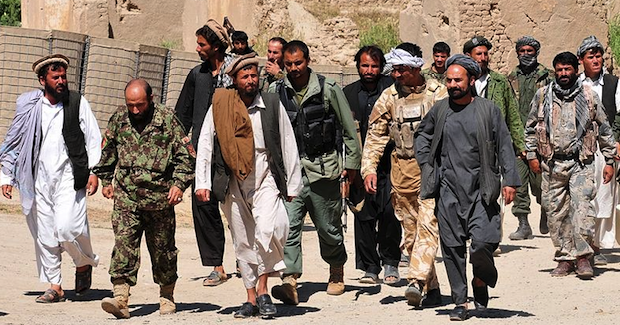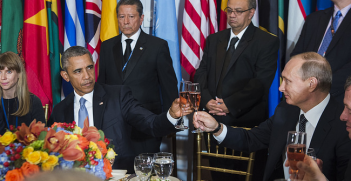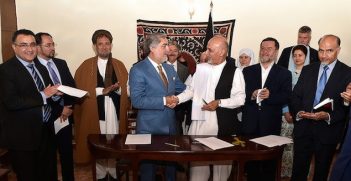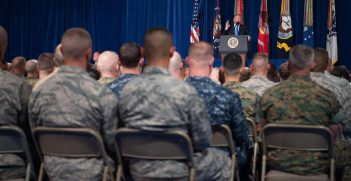Buying Time for Reconciliation in Afghanistan

The principal outcome of October’s donors’ conference on Afghanistan has been assessed as buying time for a political solution. Looking ahead, close observers forecast the likely solution for the country will be a reconciliation between the Afghan government and the Taliban, forced by a looming politico-military stalemate.
Following the donors meeting held over 4-5 October, I met with government and think tank officials of those countries who are key stakeholders in Afghanistan’s future—including NATO and neighbour and near-neighbour countries—to gauge their assessment of the outcome.
They expressed two qualifications to the above assessment. Firstly, any initial agreement on reconciliation was unlikely to include all parties as some hard-line opponents were expected to reject reconciliation. Secondly, the beginnings of any serious negotiations were unlikely to occur until late 2017 at the earliest, and would depend on the outcome of the 2017 “fighting” season.
International commitments
At the Brussels Conference, international donors committed US$15.2 billion (A$20.3 billion) in financial and other civil aid over the four year period until 2020. This included A$320 million committed by Australia. This aid was considered crucial to help sustain and promote political cohesion, government functionality and the ‘hearts and minds’ initiatives of the Afghan government during this period.
Military commitments of ongoing support to the Afghan National Defence and Security Forces (ANDSF) were given at the Warsaw NATO Summit in July. These were seen as enabling the security environment to support the financial and civil aid. Australia’s additional military financial aid commitment up until 2020 was US$100 million annually.
The fact that both the NATO summit and the donors conference were able to secure continuing international support would, or should, facilitate a reconciliation process largely on the government’s terms. However, stakeholders have reservations about this being possible because of the Unity Government’s underperformance against the political, social, economic and security goals set when it was established in 2014.
Security situation
The national security situation in Afghanistan remains fragile. It was summed up earlier this year by James Clapper, US Director of National Intelligence, who informed the US Senate Select Committee on 9 February 2016 that: “Afghanistan is at serious risk of a political breakdown during 2016, occasioned by mounting political, economic and security challenges. Waning political cohesion, increasingly assertive local power brokers, financial shortfalls, and sustained country-wide Taliban attacks are eroding stability.”
The situation has worsened since then. Politically, government unity and stability has become less cohesive, and increasingly taken on a wider ethnic dimension. General corruption and inefficiency are predominant, although progress has been recognised by stakeholders in the important areas of education, health, human rights and some aspects of financial governance. In June, the UN publicly acknowledged Afghanistan’s limited capacity to use aid resources effectively for any real impact. The UN also has acknowledged separately its own limited ability to deliver effective aid, especially in outreach areas, due to the poor security environment.
This is because the ANDSF has not yet reached capability expectations and remains heavily reliant on NATO plus (including Australian) input, especially US air combat support. However, the ANDSF generally are still a capable force. While the Taliban have expanded their control and influence to between one third and half the country, they have learned to their cost they cannot hold out against the ANDSF in pitched battles, or where the ANDSF can mass and maximise superior force capability.
Foreign investment
This fragile security situation was the principal reason for the deferment of large-scale foreign investment projects capable of creating significant development and employment opportunities. These include projects such as the Chinese exploitation of major copper resources in Logar province, immediately south of Kabul, and the Turkmenistan/Afghanistan/Pakistan/India (TAPI) gas pipeline. Interestingly, however, the media reported in November that the Taliban’s “Islamic Emirate” announced its willingness to protect infrastructure initiatives, including those above. No further details were given as to identity or motives of this group.
Reconciliation negotiations
Given government fragilities and uncertainties, those I spoke to concluded that the Taliban were not willing to give up fighting, at least yet. Assuming the stalemate solution, it was expected the Taliban would exploit all future opportunities to maximise their strengths prior to reconciliation negotiations.
Stakeholders saw international pressure on both the Afghan government and the Taliban as important in facilitating reconciliation. For the government to negotiate from a position of strength, it had to lift its performance across the board through promotion of political cohesion, improved governance and justice, the implementation of socio-economic programs with effective outreach to the provinces and districts, and greater ANDSF effectiveness.
The challenge for the Afghan government and others, was to get the Taliban to the negotiating table and to keep them there. Initial dialogue between the Taliban under its former leader Akhtar Mansour, and the Quadrilateral Group (Afghanistan, the US, Pakistan and China) which was established last year, appears to have run its course.
Following Mansour’s death in Pakistan earlier this year from a US drone strike, concerns arose that the new Taliban leadership under Haibattulah Akhundzada was not interested in maintaining any dialogue. However, media reports in October signalled that dialogue had recommenced with US and Afghan representatives at the Taliban’s political office in Qatar.
What has not been made public are the identities of the Taliban involved, who they represent and what was discussed e.g. did they represent a united Taliban leadership, or factions amongst the leadership? There has been some speculation about divisions within the Taliban leadership between those that want to keep the reconciliation option open, and hardline opponents such as the Haqqani group who reject it.
Iran, China, India, Russia and the Central Asian Republics also have their own links to the Taliban. While each party has sought to pursue specific national-interest issues, one common goal amongst all has been to seek the prevention of any Taliban cooperation with or defections to the ‘international’ terrorist groups operating in eastern Afghanistan, including Islamic State (IS), Al-Qaeda (AQ) and the Islamic Movement of Uzbekistan (IMU). Such groups are seen as posing a different, and potentially more serious long-term threat than the Taliban.
Pakistan was viewed differently by the representatives in other stakeholder countries. Because of its historic and continuing links to the Taliban, Pakistan was seen as both part of the problem and the solution.
The negatives included, firstly, distrust of Pakistan because of its alleged continuing support of the Taliban; and secondly, the Taliban’s increasing distrust of Pakistan because the latter had become too demanding in pursuing their own, rather than Taliban interests.
The positives included Pakistan’s potential to significantly disrupt Taliban operations by ceasing direct and indirect support to them, by impeding the support of others, and by arresting Taliban leaders who resided in or visited Pakistan. These actions, when combined with political pressure, could significantly influence the Taliban leadership, or elements of, to cease or reduce fighting and pursue reconciliation. There were indications of some initial steps by Pakistan in this direction.
The US in particular has recently made strong representations to Pakistan, and Prime Minister Sharif in particular, about cracking down on the Taliban and other terrorists. Sharif’s initial response has been positive but effective implementation requires the cooperation of the newly appointed Chief of Army Staff General Qamar Javid Bajwa.
Pakistan was seen by all stakeholders as a key player in the future of Afghanistan. The degree of cooperation between Sharif and Bajwa, will be one key factor in shaping Pakistan’s role in future Afghanistan developments.
Ian Dudgeon is an AIIA presidential associate and former ACT Branch president.
This article is published under a Creative Commons Licence and may be republished with attribution.





